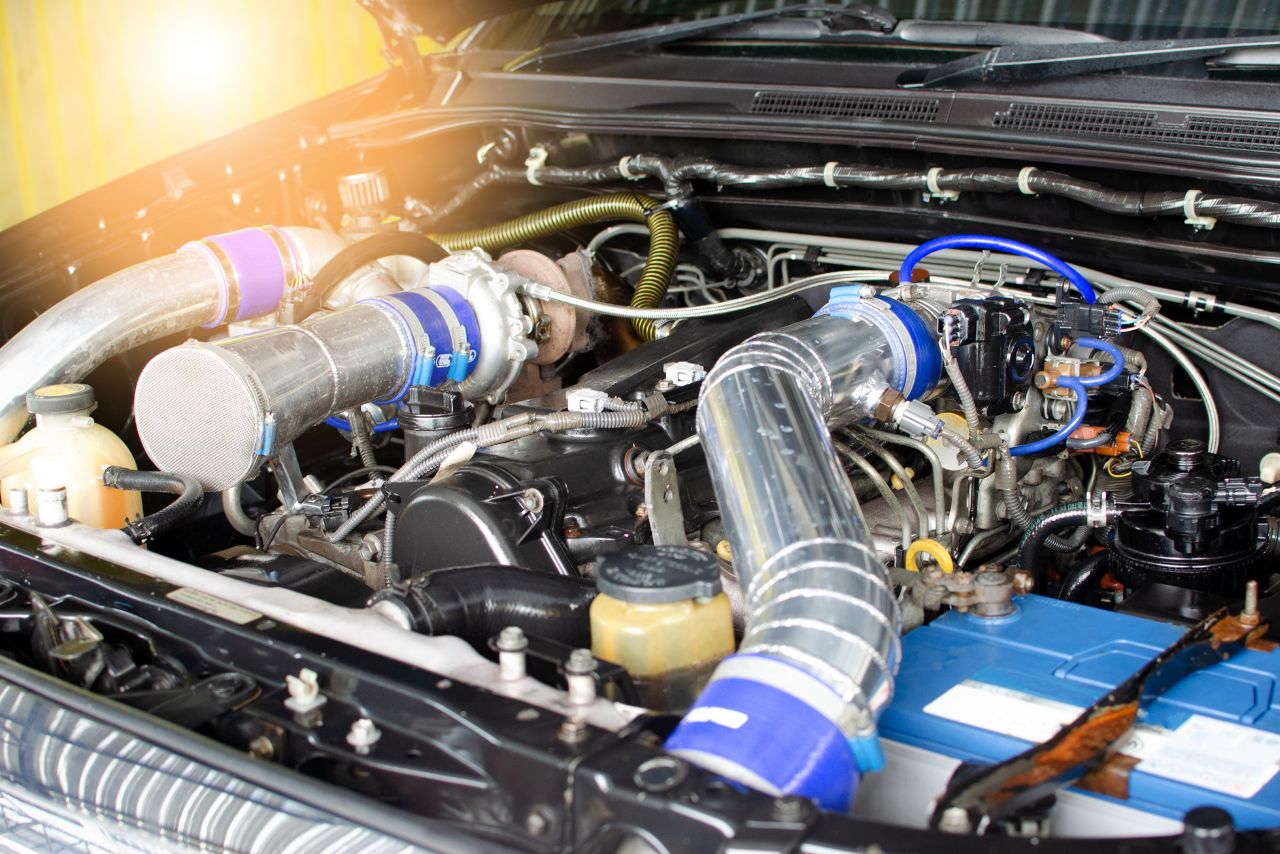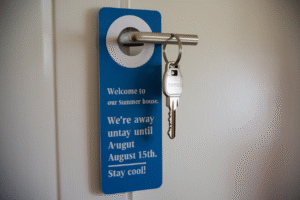Have you been experiencing an Peugeot 208 Engine Oil Pressure Fault? This could be a worrying issue, but don’t fret just yet. We have expert advice that can help you diagnose and solve the problem.
Our comprehensive guide, compiled by mechanic and author Jack Oliver, covers all the possible causes and solutions for engine oil pressure fault stop the vehicle in both generations of the Peugeot 208.
From checking the oil filter to using the correct oil, we’ve got you covered.
The article also includes tips on cost, local garages, and related content. So, if you’re a Peugeot 208 owner experiencing this issue, this 14-minute read is a must.
Keep reading to find out what causes the engine oil pressure fault, how to fix it, and whether it’s safe to drive your car with this issue.
Peugeot 208 Engine Oil Pressure Fault is an issue in which the engine oil pressure system encounters a problem. It can be caused by low oil level, leaks, a faulty oil pressure sensor, or a malfunctioning oil pump. Prompt attention is necessary to prevent engine damage. Check oil level, repair leaks, replace faulty sensor, and seek professional help if needed.
Table of contents
What does engine oil pressure fault mean?
So, you’re wondering what ‘Engine Oil Pressure Fault – Stop the vehicle’ means in the context of your Peugeot 208? Let’s dive in and find out.
This warning message is displayed on your car’s dashboard when the engine oil pressure is too low or too high.
The oil pressure is what keeps the engine lubricated and running smoothly, so it’s crucial to address this peugeot 208 engine oil pressure fault issue as soon as possible to avoid further damage to your vehicle.
There are several reasons why this warning may appear, including a faulty oil pressure switch or sensor, a blocked oil filter, low oil level, or a battery voltage problem.
It’s important to diagnose the problem correctly, based on your engine type, to determine the exact cause of the issue.
In the next section, we’ll discuss the possible causes and solutions to this engine oil pressure fault stop the vehicle problem.
7 Causes Of Peugeot 208 Engine Oil Pressure Fault Stop the Vehicle:
| Cause | Description |
|---|---|
| Low oil level | The most common cause of low oil pressure is a low oil level. This can be caused by a leak, burning oil, or not changing the oil often enough. |
| Worn oil pump | The oil pump is responsible for circulating oil throughout the engine. If the oil pump is worn, it will not be able to pump enough oil to lubricate the engine properly. |
| Blocked oil passages | Oil passages can become blocked by dirt, debris, or sludge. This can prevent oil from flowing to the engine’s moving parts, which can lead to engine damage. |
| Faulty oil pressure sensor | The oil pressure sensor is responsible for sending a signal to the engine control unit (ECU) about the oil pressure. If the sensor is faulty, it may send a false signal to the ECU, which can cause the ECU to turn on the oil pressure warning light. |
| Defective engine components | Other engine components, such as the camshaft or crankshaft, can also cause low oil pressure. If these components are damaged, they can create gaps that allow oil to escape. |
| Overheating | Overheating can cause the oil to thin out, which can lead to low oil pressure. |
| Driving style | Driving in stop-and-go traffic or towing a heavy load can put extra strain on the engine, which can lead to low oil pressure. |
If you’re experiencing an engine oil pressure fault in your Peugeot 208, it could be due to a low battery, a faulty oil pressure switch or sensor, low oil level, a worn oil pump, or a clogged oil filter.
These P15a8 Peugeot, peugeot 208 oil light issues can cause serious damage to your engine if left unchecked, so it’s important to diagnose and fix the problem as soon as possible.
Fortunately, there are several solutions available depending on the cause of the fault.
1. Low Battery:
When the low battery warning appears, it can be a nerve-wracking experience for Peugeot 208 owners.
They may also experience an engine oil pressure fault, which can be confusing as the problem may not be related to the battery itself.
A low battery can cause a drop in voltage, which in turn can cause the oil pressure sensor to send incorrect readings to the ECU and trigger the engine oil pressure fault warning.
To rule out a low battery as the cause of the engine oil pressure fault, it’s recommended that you check the battery voltage using a multimeter.
A healthy battery should have a voltage of around 12.6 volts when the engine is off and around 14.6 volts when the engine is running. If the voltage is low, it may be time to replace the battery.
It’s essential to remember that a low battery can be a symptom of a larger problem. So, if the problem persists after replacing the battery, it’s crucial to diagnose the issue correctly to avoid further damage to the engine.
2. Oil pressure switch or sensor: Peugeot 208 Oil Pressure Warning
Don’t ignore the importance of checking the oil pressure switch or sensor, as it could be the key to solving your peugeot oil pressure fault issue.
A faulty switch or sensor can cause the oil pressure warning light to turn on, even if the oil pressure is fine. Here are three things to keep in mind when dealing with this peugeot 208 oil pressure warning problem:
- Ignoring the issue can lead to serious engine damage: If the oil pressure switch or sensor isn’t working properly, it can cause the engine to receive either too much or too little oil. This can lead to serious damage to the engine, resulting in costly repairs.
- Diagnosing the problem can be tricky: A faulty oil pressure switch or sensor isn’t always easy to diagnose. You’ll need to use an OBD2 reader to check for any error codes and perform other tests to determine the root cause of the issue.
- Fixing the problem can be affordable: Depending on the cause of the issue, fixing a faulty oil pressure switch or sensor can be quite affordable, with costs ranging from £0 to £150. However, it’s important to act quickly and get the peugeot oil pressure fault problem resolved before any further damage is done.
3. Low Oil Level:
To avoid potential engine damage engine oil pressure fault peugeot 208, make sure you regularly check that your car’s oil level is sufficient.
A low oil level can cause the oil pressure to drop, triggering the warning message ‘Engine Oil Pressure Fault – Stop the vehicle’.
This engine oil pressure fault peugeot 208 can be caused by leaks, burning oil, or failing to top up the oil regularly. It’s important to check the oil level at least once a month, especially before long journeys or after extended periods of driving.
To help you understand the severity of a low oil level, here is a table showing the consequences of driving with insufficient oil:
| Oil Level | Consequence | Cost to Fix |
|---|---|---|
| Below minimum | Reduced engine performance, increased fuel consumption | £0-£50 |
| Low but above minimum | Increased engine wear, reduced engine life | £100-£200 |
| Running on no oil | Seized engine, engine replacement needed | £1000+ |
As you can see, neglecting to top up your oil can lead to significant engine damage and costly repairs. Remember to regularly check your oil level to avoid any potential engine oil pressure fault stop the vehicle peugeot 208 issues.
4. Worn Oil Pump:

If your car is making unusual noises and you’re feeling uneasy while driving, it could be a sign of a worn oil pump.
The oil pump is responsible for circulating oil throughout the engine and ensuring that it’s properly lubricated.
When the pump is worn, it may not be able to circulate the oil properly, leading to engine damage and potential failure.
There are a few signs that your oil pump may be worn, including low oil pressure, engine noise, and warning lights on the dashboard.
5. Clogged Oil Filter:
One potential culprit for engine issues could be a clogged oil filter. This can lead to a lack of proper lubrication and potential damage to the engine.
The oil filter is responsible for removing contaminants and debris from the engine oil. However, over time, it can become clogged with these particles and reduce the flow of oil to the engine.
If you suspect a clogged oil filter is causing your Peugeot 208’s engine oil pressure fault, it’s important to have it checked and replaced as soon as possible. A mechanic can diagnose the issue and replace the filter if necessary.
This will ensure that your engine has proper lubrication and reduce the risk of further damage. Regular maintenance and oil changes can also prevent a clogged filter from causing issues in the future.
6. Worn Engine Bearings:
If you suspect worn engine bearings, you may notice an unusual knocking sound coming from your car’s engine.
This could result from poor maintenance or excessive wear and tear. Worn bearings reduce friction between the moving parts of the engine, and they can cause damage to other parts of the engine as well.
To address this peugeot engine oil pressure fault issue, take your car to a mechanic to have it diagnosed properly. Replace the worn bearings as soon as possible to avoid further damage to other parts of the engine.
Consider having a full engine overhaul to ensure all parts are in good condition and prevent future issues.
7. Leaking Oil Pressure Regulator:

When your car’s oil pressure regulator is leaking, it’s like a small but constant stream of oil flowing out from under the hood.
This peugeot engine oil pressure fault can be caused by a faulty oil pressure regulator or a damaged seal. Either way, it needs to be fixed immediately to avoid further damage to your engine.
To diagnose the peugeot 2008 engine oil pressure fault issue, you can check the oil pressure gauge or use an OBD2 reader to check for any error codes related to the oil pressure regulator.
Once identified, the solution is to replace the faulty part with a new one and ensure the seal is properly installed.
The cost to fix this issue can range from £50 to £150 depending on the make and model of your car. Here’s a table to help you understand the possible causes and solutions for a leaking oil pressure regulator:
| Possible Causes | Solutions | Cost to Fix |
|---|---|---|
| Faulty oil pressure regulator | Replace with a new one | £50 – £150 |
| Damaged seal | Replace seal and ensure proper installation | £50 – £150 |
Don’t ignore a leaking oil pressure regulator, as it can cause damage to your engine and lead to costly repairs down the line. It’s best to have it fixed by a professional mechanic to ensure the job is done correctly.
Engine Oil Pressure Fault Stop the Vehicle Peugeot Warning Sign and Symptoms:
The warning sign for a engine oil pressure fault stop the vehicle peugeot is displayed as ‘Engine Oil Pressure Fault – Stop the vehicle’.
This indicates the need to diagnose the engine oil pressure fault stop the vehicle peugeot 2008 problem correctly and check various components such as the oil filter, oil level, battery voltage, and oil pressure switch/sensor.
Ignoring this warning sign can lead to serious engine damage and costly repairs.
To diagnose the engine oil pressure fault stop the vehicle peugeot 2008 problem correctly, it’s important to rule out any actual oil pressure fault before checking the battery voltage.
Using an OBD2 reader can also help in diagnosing the engine pressure fault problem. It’s best to use a local garage if in doubt and avoid driving the car until the fault has been fixed.
Cost of Repair:
Fixing this issue can cost anywhere from nothing to around £150, depending on the cause and solution. If the cause of the warning is a simple fix, such as a faulty oil pressure switch, the cost can be as low as £20. However, if the root cause is more complex, such as a blocked oil passage, the cost can be closer to £150.
It’s important to diagnose the engine oil pressure fault stop the vehicle peugeot problem correctly before attempting any repairs, as this can save you money in the long run.
It’s worth noting that if your Peugeot 208 is still under warranty, Peugeot may fund the repairs.
Additionally, regular maintenance can help prevent oil passages from blocking up and causing more serious engine pressure fault problems in the future.
If you’re unsure about the cause of the warning or how to fix it, it’s best to use a local garage or seek the advice of a mechanic.
How do you fix engine oil pressure?
Looking to fix issues with your Oil Pressure Fault Peugeot 208? Here are some steps you can take:
- Diagnose the problem correctly based on your engine type. Different engines may have different causes for oil pressure faults, so it’s important to correctly identify the issue before proceeding with any repairs.
- Check your oil filter and oil level. A clogged filter or low oil level can cause oil pressure to drop, so make sure both are in good condition.
- Check your battery voltage. A weak battery can cause issues with the oil pressure sensor, so ensure your battery is charged and in good condition.
- Use an OBD2 reader. This tool can help you access your vehicle’s computer and identify any error codes related to oil pressure or other issues.
By following these steps, you can address oil pressure fault peugeot 208 issues with your Peugeot 208’s engine oil pressure and get back on the road safely.
Remember to use caution and seek the help of a professional mechanic if you’re unsure about any of these steps.
Is it OK to drive with low oil pressure?
If you notice your vehicle’s oil pressure is low, it’s important to avoid driving it until you can properly diagnose and address the issue.
Driving with low oil pressure can cause serious and expensive damage to your engine. Low oil pressure can indicate a variety of peugeot 2008 oil pressure warning problems, ranging from a simple oil leak to a more serious issue with the oil pump or engine bearings.
Ignoring low oil pressure can lead to further damage, such as engine failure or even a fire. It’s best to have a mechanic diagnose and fix the peugeot 2008 oil pressure warning issue as soon as possible.
If you’re unsure whether it’s safe to drive your car, it’s always better to err on the side of caution and have it towed to a mechanic. Remember, the cost of a tow is much less than the cost of a new engine.
What To Do If Your Engine Oil Pressure Warning Light Is On?
If you see the warning ‘Engine Oil Pressure Fault – Stop the vehicle‘, it’s essential to take action immediately.
Ignoring this peugeot 2008 oil pressure fault warning could lead to catastrophic engine failure and costly repairs. So, what should you do if your engine oil pressure warning light p15a8 peugeot is on?
Here are some crucial steps to follow:
- First, pull over to a safe place as soon as possible and turn off the engine. This will prevent any further damage to the engine.
- Next, check the oil level using the dipstick. If the oil level is low, add more oil. However, if the oil level is normal, it’s likely that there’s a fault with the engine oil pressure system.
- In this case, it’s best to have the car towed to a garage and have a mechanic diagnose the problem correctly.
Don’t panic, but don’t ignore the engine oil pressure fault peugeot 2008 warning either. Stopping the vehicle immediately could save you from costly repairs.
Checking the oil level is easy and could be the solution to the p15a8 peugeot problem. However, if the oil level is normal, don’t try to diagnose the peugeot 208 oil light problem yourself.
Remember, the engine oil pressure system is crucial to the engine’s health, and ignoring the warning could lead to catastrophic engine failure.
Always have the car towed to a garage and have a mechanic diagnose the engine oil pressure fault peugeot 2008 problem correctly. It’s better to be safe than sorry.
Frequently Asked Questions
What does the ‘Engine Oil Pressure Fault’ warning mean in a Peugeot 208?
If you see the warning ‘Peugeot 208 Oil Pressure Fault‘, it means there might be a problem with the oil pressure. You should diagnose the issue correctly and check the oil filter, oil level, battery voltage, oil pressure switch/sensor, and use the correct oil.
What are the common causes of an engine oil pressure fault in a Peugeot 208?
Common causes of an peugeot oil pressure warning can include various faults, such as issues with the oil filter, oil level, battery voltage, oil pressure switch/sensor, or using the incorrect oil. Diagnosing the problem correctly is key to finding a solution.
What are the warning signs and symptoms of an engine oil pressure fault in a Peugeot 208?
If your Peugeot 208 has an engine oil pressure fault, you may see a warning message telling you to stop the vehicle. Other symptoms include a lit oil pressure warning light, engine noise, and increased oil consumption.
How much does it usually cost to repair an engine oil pressure fault in a Peugeot 208?
Repairing an engine oil pressure fault in a Peugeot 208 can cost anywhere from £50 to £150, depending on the cause and solution. The cost may be covered under warranty if the car is still under it.
What are some possible solutions to fixing an engine oil pressure fault in a Peugeot 208?
To fix an engine oil pressure fault in your Peugeot 208, possible solutions include diagnosing the problem correctly, checking the oil filter and level, using the correct oil, and using an OBD2 reader. The cost to fix can range from £50 to £150 depending on the cause.
Conclusion and final thoughts 💭
So, there you have it – a comprehensive guide to diagnosing and solving engine oil pressure faults in your Peugeot 208.
From understanding the peugeot 208 engine oil pressure fault when braking warning signs and symptoms to checking the oil filter and using the correct oil, our expert mechanic has covered all the possible causes and solutions for this peugeot oil pressure warning issue.
Remember, if you do experience an engine oil pressure fault, don’t panic. With the right knowledge and guidance, you can easily fix the peugeot partner oil pressure fault problem and get back on the road.
And if you’re still unsure or need further assistance, don’t hesitate to contact your local garage or mechanic for help.
By taking care of your car’s engine oil pressure, you’ll ensure a smooth and safe driving experience for years to come.





Leave a Reply